Who this is for & what you’ll get
One page to understand every type of dance tights—footed, convertible, footless, stirrup, fishnet, crotchless—plus how denier and finish (matte vs shimmer) affect look and durability. You’ll get fast answers, a 10-second comparison table, step-by-step selection guidance, and routes to deeper reads and product pages.
Quick answer: which dance tights should I wear?
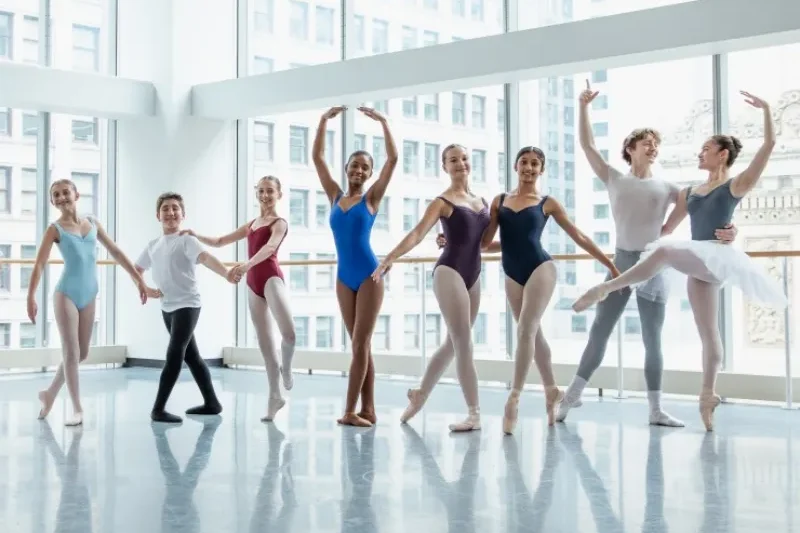
- Ballet class (US studios): Footed or Convertible; matte 60–70D for uniform opacity and durability. Higher denier ⇒ thicker & more opaque.
- Pointe/toe taping access: Convertible (under-arch opening lets you switch to barefoot in seconds).
- Modern/contemporary (barefoot): Footless or Stirrup for grip and an extended arch line.
- Broadway/jazz/tap stage sparkle: Fishnet or Shimmer (often with foot pads/reinforcement; high airflow).
- All-day rehearsals & quick changes: Consider crotchless for breathability and restroom speed—check dress codes first.
At-a-glance comparison
Dance Tights Types — Fast Comparison
Desktop: sticky header table. Mobile: readable cards. Pastel ballet palette.
| Type | Structure | Best for | Pros | Watch-outs |
|---|---|---|---|---|
| Footed | Waist-to-toe coverage | Ballet, jazz, tap |
|
• Slow to go barefoot |
| Convertible | Under-arch opening | Pointe, mixed classes |
|
• Ensure a quality finish at opening |
| Footless | Hem at ankle | Modern / contemporary |
|
• No toe protection in shoes |
| Stirrup | Heel/toe open; arch strap | Contemporary conditioning |
|
• Heel friction if worn in shoes |
| Fishnet | Mesh grid; often with pads | Broadway / jazz / tap |
|
• Less uniform coverage—layer if needed |
| Shimmer | Gloss/reflective finish on an opaque base knit | Musical theatre, jazz, Latin & any stage needing light-catching legs |
|
• May highlight texture/imperfections; not ideal for strict exam dress codes |
| Crotchless | Open gusset | Quick changes, breathability |
|
• Not for all dress codes |
The types (what they are, when to use them)
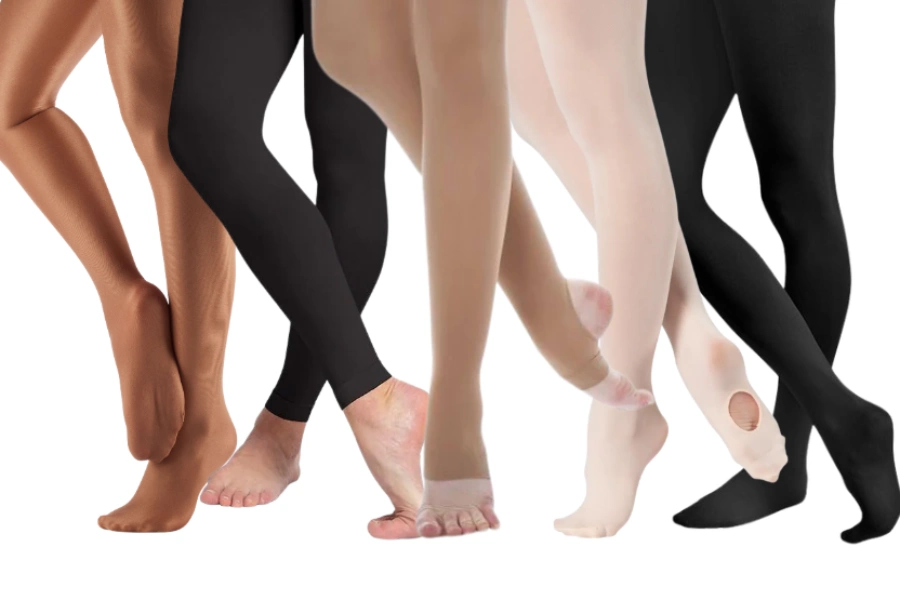
Footed tights (the studio standard)
Classic waist-to-toe tights that tuck neatly into soft shoes, pointe shoes, jazz and tap shoes. Favored in uniformed ballet classes for clean lines and coverage.
Convertible tights (footed ⇄ barefoot in seconds)
Feature a round opening under the arch so you can slip your heel out for toe taping, foot care, or barefoot work—then pull back on for shoes. Capezio 1916 & BLOCH Adaptatoe are well-known examples with self-knit/wide waistbands and dyed-to-match gussets.
Footless tights (for true barefoot technique)
End at the ankle so the sole contacts the floor—ideal for modern, contemporary, lyrical and crossover training like gymnastics.
Stirrup tights (for that arch line)
Expose heel and toes with a strap under the arch, extending the instep visually while retaining some coverage. Often used barefoot; test with shoes for heel rubbing.
Fishnet tights (stage durability & ventilation)
Purpose-built for Broadway/jazz/tap: tough mesh construction, excellent airflow, and in pro models, soft sock linings/solid foot pads to stabilize shoes during intense numbers. Layer over matte tights if you want more uniform coverage.
Crotchless tights (comfort & quick changes)
Open-gusset designs that many retailers position as cooler and more hygienic; they can speed restroom breaks between numbers. Suit long rehearsals or costume-heavy shows; confirm your studio’s rules before using.
Denier & finish: how thickness and sheen change the look
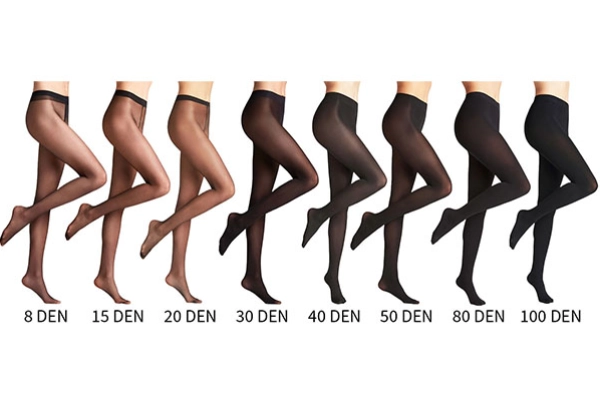
Denier, decoded
Denier (DEN) measures yarn weight. Higher DEN ⇒ thicker fabric ⇒ more opacity. Sheer tights start as low as 6–20 DEN; 50+ DEN are generally opaque, with many dance tights in the 60–100 DEN range for coverage and durability.
Matte vs shimmer/gloss
- Matte: non-reflective finish that hides minor imperfections and reads “classic” on stage and in class. (Common in ballet exam/training contexts.)
- Shimmer/Gloss: reflective fibers/coatings that catch light for a high-impact leg line; popular in musical theatre, jazz and show styles. Energetiks explicitly positions High Gloss for performance aesthetics.
Fabric & construction: what impacts comfort, support, lifespan
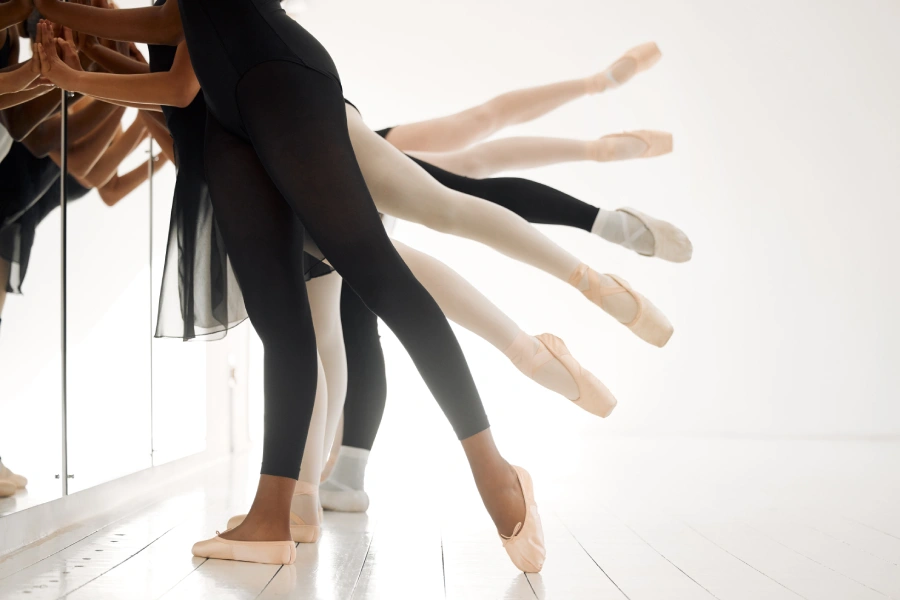
- Nylon/Spandex (including Tactel® blends): high stretch & recovery with soft hand; used in Capezio Ultra Soft™ lines with self-knit, elastic-free waistbands to reduce rolling.
- Microfiber: very smooth, even coverage and opacity—commonly highlighted in dancewear guides for a uniform finish.
- Reinforcements for stage fishnets: pro models add sock linings/foot pads to protect toes and stabilize shoes.
- Gussets & waistbands: dyed-to-match gussets and wider knit waistbands improve comfort and invisibility under leotards.
How to choose (step-by-step)
- Confirm your setting & style
Ballet class/exams → Footed or Convertible, matte 60–90D.
Pointe or frequent toe care → Convertible.
Modern/contemporary barefoot → Footless or Stirrup. - Pick opacity (denier)
Want muscle definition / lighter feel? 40–50D.Want uniform coverage & durability? 60–100D+. Higher DEN = thicker & more opaque. - Choose finish
Matte for class/exams; Shimmer/Gloss for showy stage looks. - Check construction & comfort
Self-knit/wide waistbands; dyed gusset; microfiber or Tactel® blends if you prefer a soft, even look. For fishnets, look for foot pads/lining. - Test movement
If wearing stirrups with shoes, check for heel friction. Convertible: ensure the opening lies flat when switched.
Mini How-To: use convertible tights as footed or barefoot
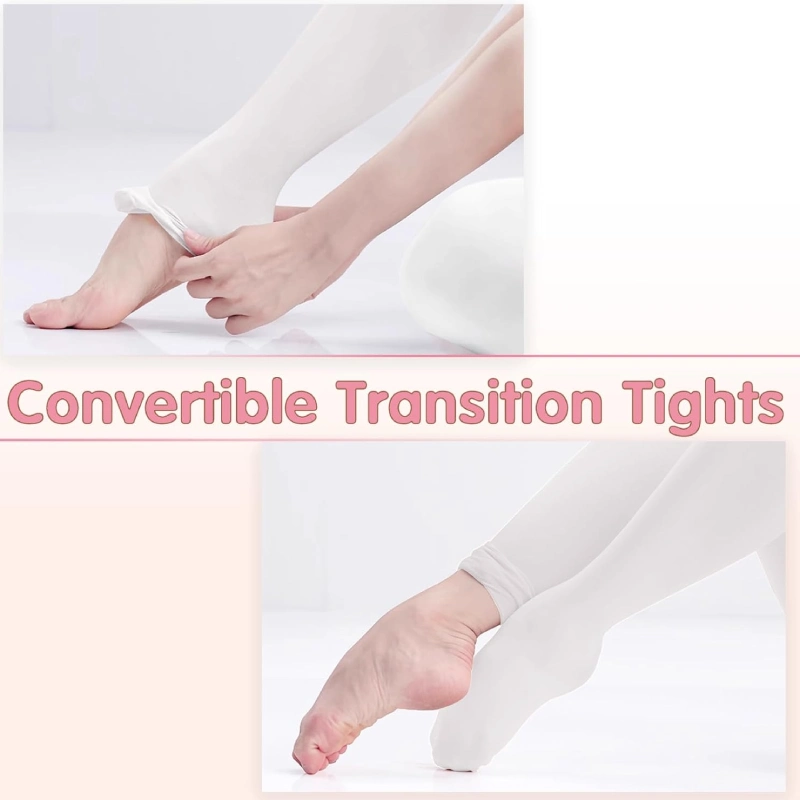
- Sit and locate the under-arch opening.
- Pull the heel through to free the foot; roll the foot section to the ankle for barefoot work.
- To revert, slide the foot back in; smooth the fabric before putting on the shoes.
Real-world kits (quick scenarios)
- Teen ballet + occasional pointe: 2× Convertible for class/pointe + 1× Footed for performances, all matte 60–70D.
- Modern repertory season: 2× Footless + 1× Stirrup for arch emphasis in select pieces.
- Musical theatre run: Professional Fishnet (with foot pads) layered over a matte base when extra coverage is needed.
Care & longevity

Hand wash cold, hang dry; avoid rough surfaces and Velcro; rotate pairs; keep a spare pair and clear nail polish in the dance bag for emergencies. (Brand PDPs recommend hand-wash/hang-dry for longevity.)
Build Your Program: Request a Wholesale Quote
- MOQ & tiered pricing by denier/finish
- Sizes Child–Adult (US), custom colors, OEM/ODM
- Start RFQ
Or pick by type: Collection / Footed / Convertible / Footless / Shimmer / Stirrup / Fishnet
Trusted by studios & retailers; quality control & warranties available.
FAQs
Are convertible tights allowed for exams?
Check your studio or examining body. Many US schools permit convertible/adaptive if the opening isn’t visible and the color matches the dress code. When in doubt, ask your teacher or follow the school’s attire page.
What denier is best for ballet class?
For opaque, uniform legs that last, most dancers choose ~60–70D; higher denier (70–100D) increases opacity and durability. Lower denier (40–50D) feels lighter but shows more. Denier = yarn weight: higher ⇒ thicker/more opaque.
Fishnet vs shimmer tights for stage—how do I choose?
Fishnet offers airflow and durability; pro models add sock linings/foot pads for stability. Shimmer/Gloss catches light for a showy leg line—great for musical theatre/competitions. Pick by choreography and costume requirements.
How should I wash dance tights to make them last?
Follow labels; brands commonly advise hand-washing cold and air-drying. Avoid heat and rough surfaces, and rotate pairs. Spot-treat gently; harsh chemicals and dryers shorten lifespan.
How do I choose the right size?
Use the brand’s height/weight chart and fit notes; if between sizes, many retailers suggest sizing up for longevity and opacity. Ensure waistband sits flat; returns/exchanges follow retailer policy.
What’s best for pointe work—footed or convertible?
Convertible tights let you access toes quickly for taping and care, then switch back to shoes—ideal around pointe classes and rehearsals.
